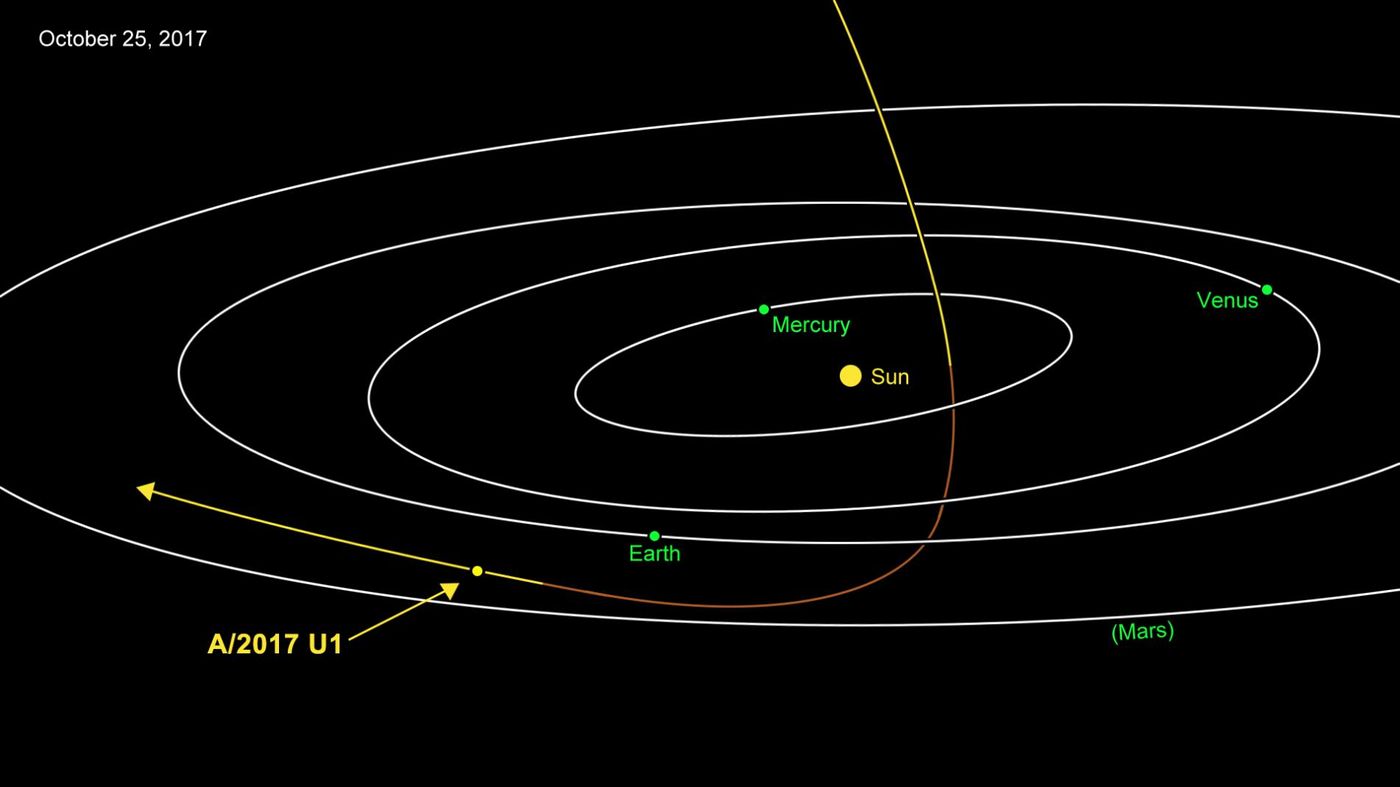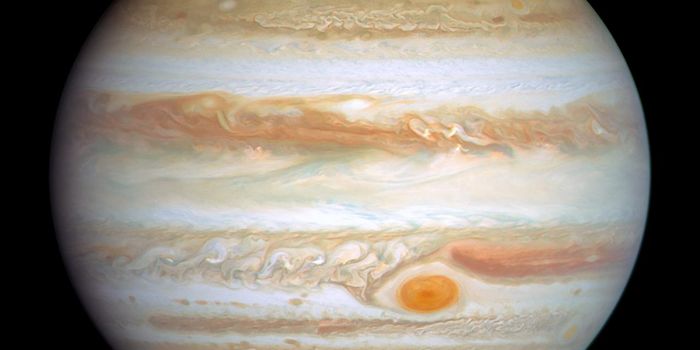Unidentified Interstellar Object Whizzes Through Our Solar System
While astronomers witness asteroids and comets whizzing through our solar system on a consistent basis, it’s not every day that one of those happens to be an interstellar space rock taking a shortcut through our solar system.
It would seem that a space rock originating from an alien solar system has trespassed into our planetary neighborhood. Experts are now scrambling to study what’s left of it before it whips out of our view just as fast as if came flying in.
Image Credit: NASA/JPL-Caltech
Dubbed A/2017 U1, the rock was first discovered on October 19th by researcher Rob Weryk as he made observations through the Pan-STARRS 1 telescope at the University of Hawaii’s Institute for Astronomy.
It’s reportedly the first alien space rock that astronomers have ever identified, and while that doesn’t mean that interstellar space rocks haven’t penetrated our solar system’s property lines previously, it does highlight that this is the first one to get recognized for it.
As recent reports put it, Weryk noticed the abnormal speed and trajectory of A/2017 U1 and it quickly became apparent that it didn’t agree with other objects of this nature. Worthy of note, the rock measured just under a quarter of a mile across and was moving at a respectable 98,000 miles per hour.
"This is the most extreme orbit I have ever seen," said NASA scientist Davide Farnocchia from the Center for Near-Earth Object Studies (CNEOS) at JPL. "It is going extremely fast and on such a trajectory that we can say with confidence that this object is on its way out of the solar system and not coming back."
Related: Size really does matter regarding asteroid collisions
Because of how fast A/2017 U1 was moving, even the Sun’s immense gravitational pull wasn’t adequate to capture it. Nevertheless, that very same gravitational tug put a massive dent in the space rock’s trajectory, as you’ll see in the illustration above. You'll also notice just how closely it tangoed with the Earth – only 60 times the distance of our Moon away from us.
While we realize that it's an alien object, ascertaining where it came from is a tough feat. Through its trajectory, astronomers can say it came from the direction of the constellation Lyra. It is now heading for the constellation Pegasus after being redirected by the Sun’s gravity.
"We have been waiting for this day for decades," said CNEOS Manager Paul Chodas. "It's long been theorized that such objects exist - asteroids or comets moving around between the stars and occasionally passing through our solar system - but this is the first such detection. So far, everything indicates this is likely an interstellar object, but more data would help to confirm it."
Related: FEMA and NASA begin working together to plan for asteroid emergencies
Because the rock came into our solar system by pure luck, the event underscores just how plausible it is for a decent-sized space rock to travel through interstellar space unnoticed. That said, it’s not only the near-Earth objects (NEOs) that we should keep an eye out for…









